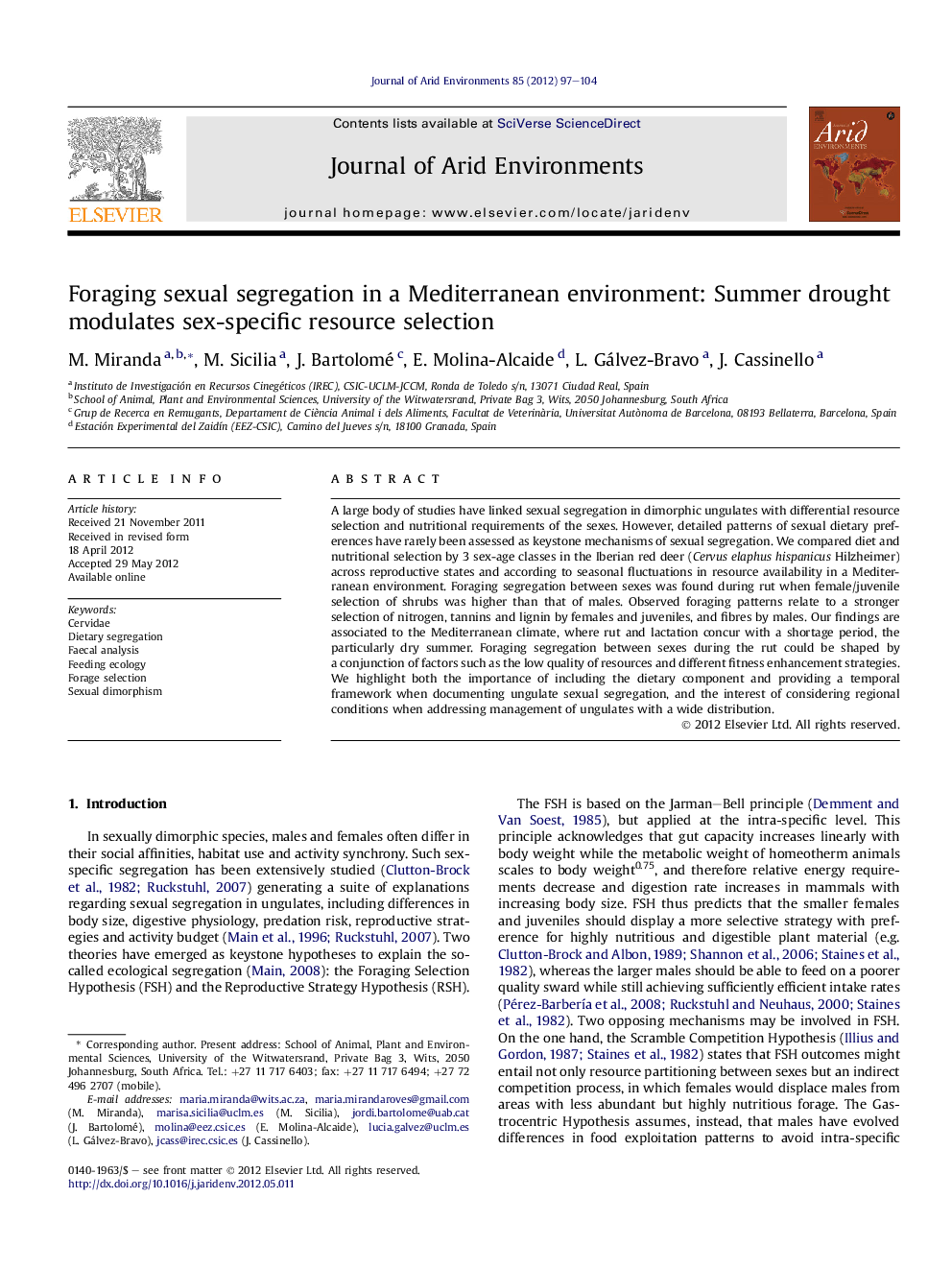| Article ID | Journal | Published Year | Pages | File Type |
|---|---|---|---|---|
| 4393316 | Journal of Arid Environments | 2012 | 8 Pages |
A large body of studies have linked sexual segregation in dimorphic ungulates with differential resource selection and nutritional requirements of the sexes. However, detailed patterns of sexual dietary preferences have rarely been assessed as keystone mechanisms of sexual segregation. We compared diet and nutritional selection by 3 sex-age classes in the Iberian red deer (Cervus elaphus hispanicus Hilzheimer) across reproductive states and according to seasonal fluctuations in resource availability in a Mediterranean environment. Foraging segregation between sexes was found during rut when female/juvenile selection of shrubs was higher than that of males. Observed foraging patterns relate to a stronger selection of nitrogen, tannins and lignin by females and juveniles, and fibres by males. Our findings are associated to the Mediterranean climate, where rut and lactation concur with a shortage period, the particularly dry summer. Foraging segregation between sexes during the rut could be shaped by a conjunction of factors such as the low quality of resources and different fitness enhancement strategies. We highlight both the importance of including the dietary component and providing a temporal framework when documenting ungulate sexual segregation, and the interest of considering regional conditions when addressing management of ungulates with a wide distribution.
► We compared diet and nutrient selection for 3 sex-age classes in Iberian red deer. ► Foraging sexual segregation was found during the resource-limiting rut. ► During rut, females and juveniles selected for a higher shrub content. ► Plant selection relates to lower N, tannins and lignin in males. ► Low resource quality, dimorphism and fitness might explain observed differences.
